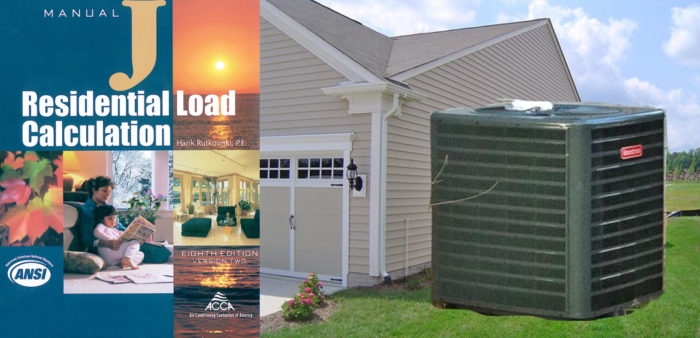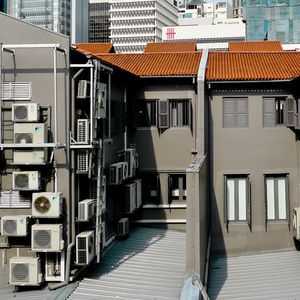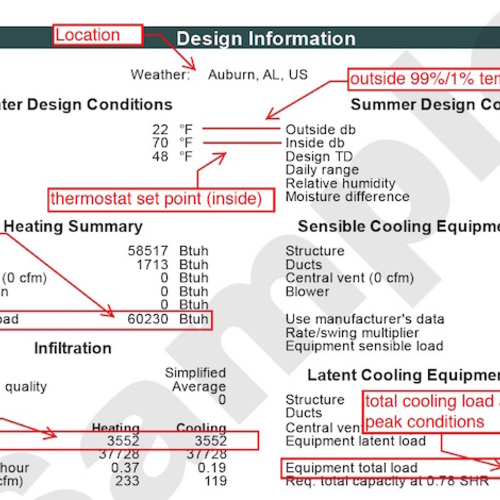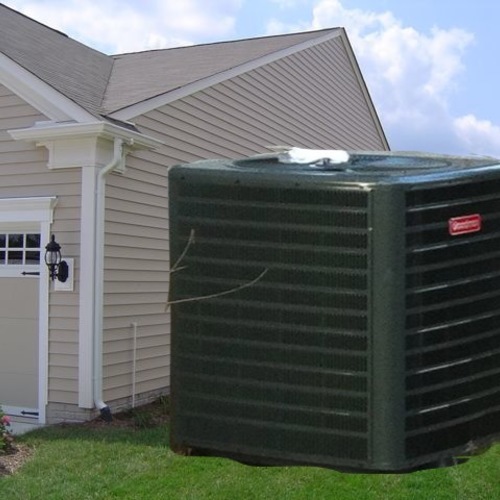
Image Credit: Energy Vanguard
Here’s a little conundrum for you. To get the right amount of heating and cooling to each room in your home, you need a load calculation. Rules of thumb don’t work. But if you do a load calculation, the result isn’t the size of air conditioner, heat pump, furnace, or boiler you need. It’s only the first step to sizing your system.
Do you know why? Let’s take a look.
Heating with combustion
This one’s easy. Let’s say the heating load for your home (in those annoying imperial units) is 50,000 BTU per hour. That means you have to install a furnace or boiler that can provide 50 kBTU/hr of heat to the home under design conditions. If the unit you install is 80% efficient, you need to install one that has a capacity of 62.5 kBTU/hr or higher. If you install a 96% efficient system, you need one with a capacity of 52 kBTU/hr.
This brings up the issue of input versus output capacity. HVAC pros normally talk about combustion appliances in terms of input capacity. The load calculation tells you what your output capacity needs to be.
The nice thing about sizing combustion appliances is that the capacity generally doesn’t change with changing outdoor conditions. When you burn a therm of natural gas, a gallon of oil, or a pound of coal, the amount of heat given off depends only on the fuel, not what the outdoor temperature is.
But there’s a little caveat to that rule. The output capacity of a combustion appliance does depend on elevation. If you’re burning natural gas in Aspen, Colorado, which is at 8,000 feet of elevation, your output capacity is lower because the density of air is lower.
Heating with a heat pump
If you’re going to use a heat pump, things are likewise pretty simple. Their performance rating to the standards of the Air Conditioning, Heating, and Refrigeration Institute (AHRI) yields the heating capacity at outdoor temperatures of 47°F and 17°F. The indoor temperature for the rating is 70°F. So you can use those capacities or manufacturer’s data to find a heat pump that provides enough heat for your climate.
But of course, it’s not really so simple. If you’re using a heat pump, there’s this thing called the balance point. As the outdoor temperature goes down, the heating capacity of an air-source heat pump goes down, too. At some point, the heating capacity is just equal to the heating load. That’s the balance point. Once the outdoor temperature goes below the balance point temperature, the heat pump can’t make as much heat as the house needs. Then you need some kind of supplemental heat.
If you’re using electric resistance heat (also known as strip heat), your heating efficiency drops significantly once the strips turn on. As a result, you generally want to minimize the use of strip heat. To do that, you have to look at your cooling needs and make some compromises. Most homes do not have an even balance between heating and cooling loads so you’re either going to be oversized on cooling or have to use excess supplemental heat.
Cooling with a heat pump or air conditioner
It’s the cooling side of things that motivated this article. Fifteen years ago, I didn’t understand this point and ended up undersizing some equipment as a result. Here’s why. The Manual J cooling load you calculate is how much cooling the house needs. Let’s say you need a total of two tons of cooling. You don’t just go to your HVAC supply house and say, “Give me your best two-ton air conditioner.”
First, the total load isn’t the most important number. The total load is made up of two separate loads: sensible (temperature) and latent (humidity). The air conditioner you buy has to meet both separately.
A common problem here is getting an air conditioner that meets the latent load but not the sensible. Why? Because if you go by the total load only, that’s where you end up. Here are some numbers from a job we did:
Sensible load: 14,833 BTU/hr
Latent load: 3,799 BTU/hr
Total load: 18,632 BTU/hr
If you go down to the supply house and ask for an air conditioner that has a total capacity of 18,632 BTU/hr, here’s what the specs might be:
Sensible load: 13,042 BTU/hr
Latent load: 5,590 BTU/hr
Total load: 18,632 BTU/hr
This air conditioner would be fine for the latent load but it would fall 12% short in meeting the sensible load at design conditions. The air conditioner we specified had a total load of 23,600 BTU/hr. It meets both the latent and sensible loads for this home as well as accounting for the other adjustments an HVAC designer needs to make.
What adjustments would those be? Well, as it turns out, the conditions for testing and rating equipment aren’t the same as the design conditions. For air conditioners and heat pumps in cooling mode, the different design conditions can result in significant capacity differences.
AHRI tests the outdoor condensing unit at 95°F. In Phoenix, the outdoor design temperature is 108°F, so it’s going to have a lower cooling capacity. Here in Atlanta, we get a little extra cooling capacity because our outdoor design temperature is 92°F, which is 3°F below the test temperature.
Likewise, you have to adjust for the indoor conditions. For some reason, AHRI thinks people run their homes at 80°F and 51% relative humidity. It takes more sensible and latent capacity to hit the actual design conditions of 75°F and 50% RH. All this gets taken into account in ACCA’s Manual S equipment selection protocol.
What a Manual J load calculation doesn’t tell you
My point here is simple. A Manual J load calculation doesn’t tell you what size heating or cooling system you need. It tells you how much heating and cooling your system needs to provide. It’s easy to confuse the two when you’re just learning about this, but it’s important to distinguish between load — how much heating and cooling the house needs — and capacity — how much heating and cooling the equipment provides.
Allison Bailes of Decatur, Georgia, is a speaker, writer, building science consultant, and the author of the Energy Vanguard Blog. You can follow him on Twitter at @EnergyVanguard.
Weekly Newsletter
Get building science and energy efficiency advice, plus special offers, in your inbox.















2 Comments
I need help sizing a replacement condensing boiler in CT. Is there someone who could recommend a company that has the knowledge described in this article?
Thanks
Lene
For replacements, you can use this:
https://www.greenbuildingadvisor.com/article/out-with-the-old-in-with-the-new
For residential condensing boilers, the minimum input is about 8,000 btu/hr across manufacturers for 80,000 kbtu max and lower boilers, while a 100kbtu boiler typically comes down to 10kbtu, so the improvements gained by going with the right sized boiler are marginal. The heat loss is important for other reasons, as you can electronically restrict the maximum fire rate of many boilers to the true heat load and dial in the water supply temperatures better if you know the heat loss.
Log in or create an account to post a comment.
Sign up Log in